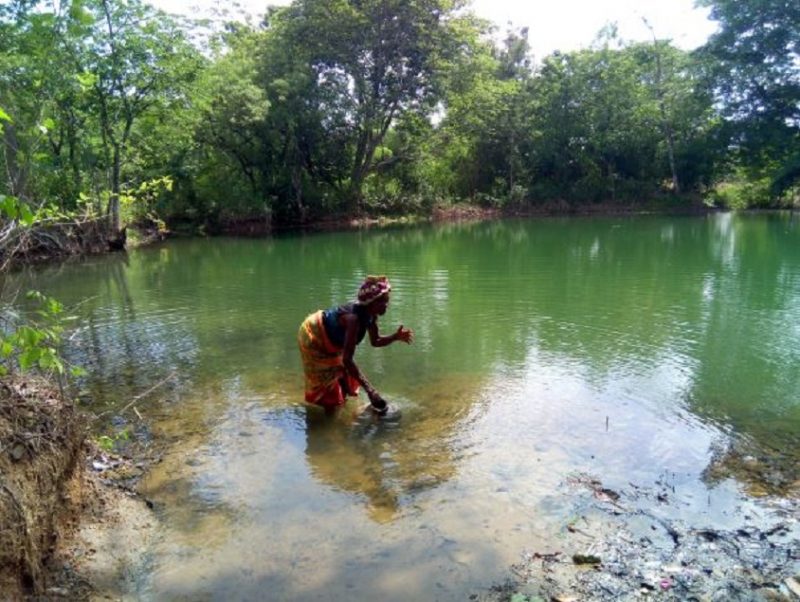The Salt Lakes of Ebonyi and its Popular Initiation Ceremony
Ever wondered why Ebonyi state is called “Salt of the Nation?” Today’s Saturday Small Chops provides answers by spotlighting the popular salt lakes of Ebonyi state.

Before the inception of industrialized salt production, Ebonyi state of Eastern Nigeria has thrived on traditional salt production for over 400 years, especially in its salt-lake towns – Okposi Okwu and Uburu Ohaozara local government area. According to history, the salt lake of Okposi was discovered by two hunters, Ekwna Chita and Uta Anoo, when they wanted to drink water from the lake after several hours of game hunting. Although Uburu is larger than the Okposi Salt Lake, Okposi is more vital to the Ebonyi State’s economy, attracting dealers from the north and east to its famous Odenigbo Okposi market.
History informed that the salt lake triggered the development of an interesting mud-like local technology where the salt is processed by indigenous women of the town, who intuitively employ solar energy (natural sunlight) as a source for processing the salt. The local industry, otherwise called industrial hut is popularly referred to as “Ewe”, and it is privately owned by different women.
Read Also: 10 Interesting Details About Opa Oranmiyan (Oranmiyan’s Staff) you Should Know
Salt Making as an Initiation into Womanhood
Salt making was the major enterprise of Ebonyi women. It was used as an initiation into womanhood. Once a young woman completes her honeymoon, she is immediately initiated into the business of salt making by older and experienced women.

Before the initiation, her older friends and relations find a convenient day when they would fetch enough pots of the saltwater (brine) for her. On a set day, the brine would be used to make a puddle (mixture of clay and water) with which the Ewe (hut) would be built. The same puddle will also be heaped at the front of the hut to form a huge mound of earth called “okperede.” The essence of this is to make a hillock that will serve as a preservation for the salt crystals once it is completed.
The initiation process is guided by rules which must be duly observed. The initiate for instance will have to fetch brine directly from Mmahi Ezi, the main Salt Lake or from Enyanwu, a supporting pond. The initiate must improve the mound built and pour enough brine on it just so it gets rich in salt crystals. Often, the puddle is left to dry up for some hours or days, depending on the weather. The hardened puddle is further broken into smaller pieces and poured into “ofufu,” a perforated pot. All these processes are just to set up a shard that will serve as a simple sand filter once it is filled with the salty earth.
Traditional Salt Production
The salt was previously extracted by boiling but considering that Okposi is hardly surrounded by wood, the” Oreohu” pot was devised as an evaporation vessel. Much later, kerosene tins were used and recently, enamel basins became essential for the extraction of salt. The salts were baked to preserve, package and market them. Soon, local women were taught how to use alum to sediment dirt.
However, since the advent of industrialized salt production in contemporary Nigeria, salt processing took a different method. The Salt Lakes of Ebonyi made the state prominent amongst other neighbouring states as the salt attracted business inclined individuals from various parts of the country. On several occasions, Okposi salt has served as the major supply to Eastern and Northern Nigeria.
What do you find most interesting about the Salt Lakes of Ebonyi State? You’re welcome to share with us.
